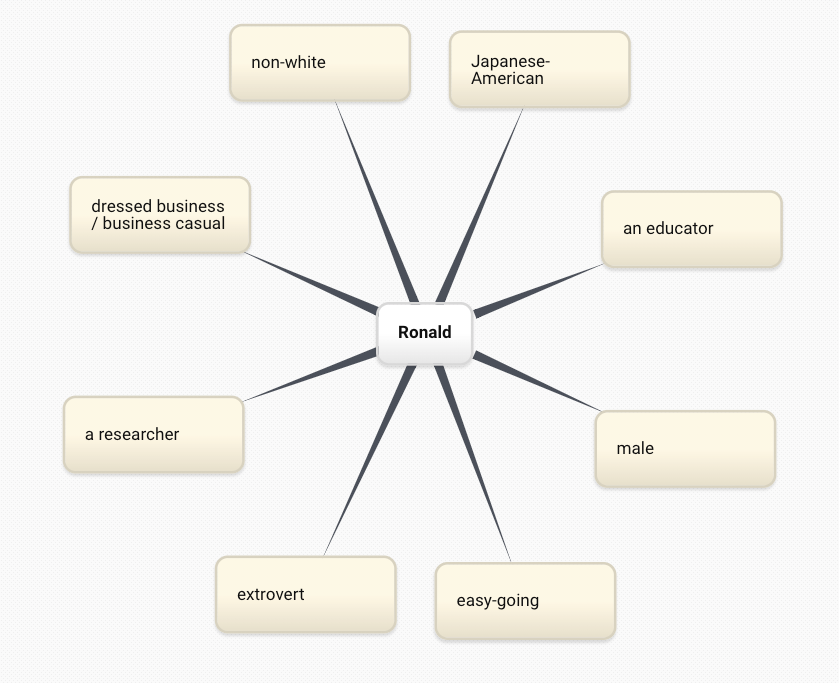The Doc is In - Teaching Identity
Or more to the point, learning about our identities
It’s the Second Week of the semester
Right around this time every semester I do a lesson/activity about Identity. It’s something that Liz Kleinrock spoke about a couple years ago at a “ABAR in Practice” workshop I attended as part of the “Dismantling Racism in Education” series. Liz actually cited Sara K. Ahmed’s ‘Exploring Our Identities’ lesson from her book Being the Change - Lessons and Strategies to Teach Social Comprehension (Heinemann). I borrowed stole this lesson and then amended and shaped and revised and molded and altered and reshaped it so many times and it goes something like this:
First
I ask my students, who are undergraduate and graduate students in a teacher education program, to (individually at first) create a list of all the traits that make up one’s identity. I give them a moment or two and then have them pair/group up with a couple few of their classmates and grow their list by sharing what they have with each other. The Think, Pair, Share ends with me creating a class list on the board. I create a visual on the board of these traits using a mind map or brainstorming “web”. (The website Bubbl.us is a great digital tool to use to create these!) Typically the traits my students come up with are:
name
appearance
culture
beliefs
nickname
gender
likes/dislikes
sexual preference
ethnicity
family history
sex
race
education
career / job
economic status
fashion
goals
social groups
If I let them, my students could come up with twice or three times as many traits. But as my fellow educators here know, being time-aware is an important part of our job.
Then
Now that we know what makes up one’s identity, we read a short story or passage or article that describes, in some way, a person or character. (Some examples of this could be a piece of nonfiction, a fictional short story, or even a short bio from a sports magazine - the possibilities are endless!) The last few times I’ve done this with my class I’ve used the first page or so from A Different Mirror (Takaki, 1994). As my students read this short passage, I ask them to compose an identity map of the narrator and main character Ronald.
While they are reading, I write Ronald in the middle of another dry erase board and put a circle around it. Once they finish reading (about 5-7 minutes) I ask them to share out and we build a class identity map that looks something like this (except much sloppier - because it’s in my handwriting!):
Finally
Now that we’ve practiced composing an identity map about someone else, I ask my students to look inward and create their own identity map - about themselves.
I insist that this is a private composition - it will not be submitted or turned in or even talked about - this allows them to be more open and introspective and honest with their map.
As they put theirs together, I draw mine on the board (or overhead, depending on how much board space I have). Every time I’ve done this activity, I’ve chosen to share different parts of myself with my class. It all comes organically and some time I struggle with the items I put up and other times it comes so easily and quickly. I share my pronouns and some of the cities I’ve worked in or lived in or the places I have family. I share that I prefer Marvel to DC and that I have a soft spot in my soul for My Neighbor Totoro. Sometimes I name the last few television shows or movies I’ve watched. Sometimes I share the different jobs I’ve had. Sometimes I tell them that I’m still a fan of grunge music.
If there is time I sometimes have my students group back up and rather than sharing their maps, I ask them to introduce themselves (this is only the 2nd week of class after all) and tell them one thing they feel everyone should know about them before meeting them. This gives them a chance to reflect on this activity and really think about their identity / themselves.
Discussion
Why do I do this activity in this course - an introductory and foundational teacher education course?
My students say it’s because it helps us get to know each other.
My students also say it’s important to know ourselves and this activity helps us get to know ourselves better.
Another thing my students say is: as teachers, it’s important to know who our students are so that we can teach them - and reach them - better.
So now you can see why my students are so awesome.
No one is just one thing. I am not only white or only cis male or only an educator. I am not only a son or only a brother or only an uncle. I am not only a fan of Anime or only a fan of Star Wars or only a fan of the MCU. I am all of these things - they are ALL parts of my identity, intersecting. And so many other things! Understanding that about ourselves helps us navigate through the world and it also allows us to see that our students are also a multitude of people all at once.
Just because all of our students are sitting in our classroom does not mean they all got there the same way. Learning who they are (inside and outside of our classroom) is essential to doing this job.



